Oh clever title: cheetahs, when fully grown at about 18 months, are the fastest mammal on earth, clocking 70 miles per hour in short bursts. For this documentary, we were in the magnificent country of Zimbabwe, in all seasons, following a cheetah family which uncharacteristically lived in forest as well as river plain.
Guided by the soothing and authoritative voice of Sir David Attenborough, armed with an elegant script, we followed the fortunes over nearly two years of a mother cheetah and her five cubs, four females and a male. We were enabled to do this by the cameraman and conservationist, the south African Kim Wolhuter, who has actually been able to get up close and personal to this family group (cheetah mom, below).
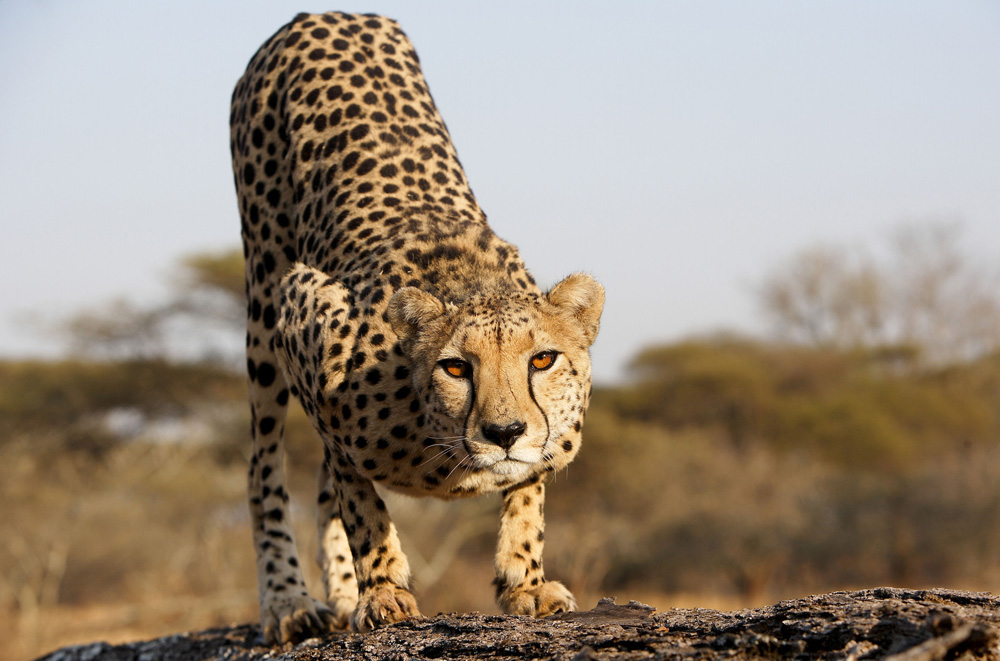 Once common, cheetahs are now an endangered species in their natural habitats, because of human encroachment. As successful predators, the animals come into conflict with farmers who illegally – as cheetahs are officially protected – shoot them to protect their lifestock. It's a short-sighted policy because if one cheetah is removed from the huge territory it patrols, another will move in. One thing this progamme omitted was any discussion of the current state of cheetahs and the efforts being made to sustain their survival.
Once common, cheetahs are now an endangered species in their natural habitats, because of human encroachment. As successful predators, the animals come into conflict with farmers who illegally – as cheetahs are officially protected – shoot them to protect their lifestock. It's a short-sighted policy because if one cheetah is removed from the huge territory it patrols, another will move in. One thing this progamme omitted was any discussion of the current state of cheetahs and the efforts being made to sustain their survival.
The life is tough, even without human hostility. Unlike lions, male cheetahs will not attempt to kill cubs not their own, but they do come round the females from time to time, sniffing and marking their territories, in efforts to mate. As we witnessed, when the female cheetah is not hormonally ready, nothing can happen and the males prowl away elsewhere.
For in cheetahville, the mothers are always single mothers, bringing up their cubs and teaching them to hunt all on their own. The poignant climax showed us the mother, after some 18 months and more of continual maternal concern and care, wandering off herself, spraying as she went to show herself ready for another brief encounter with an eager male.
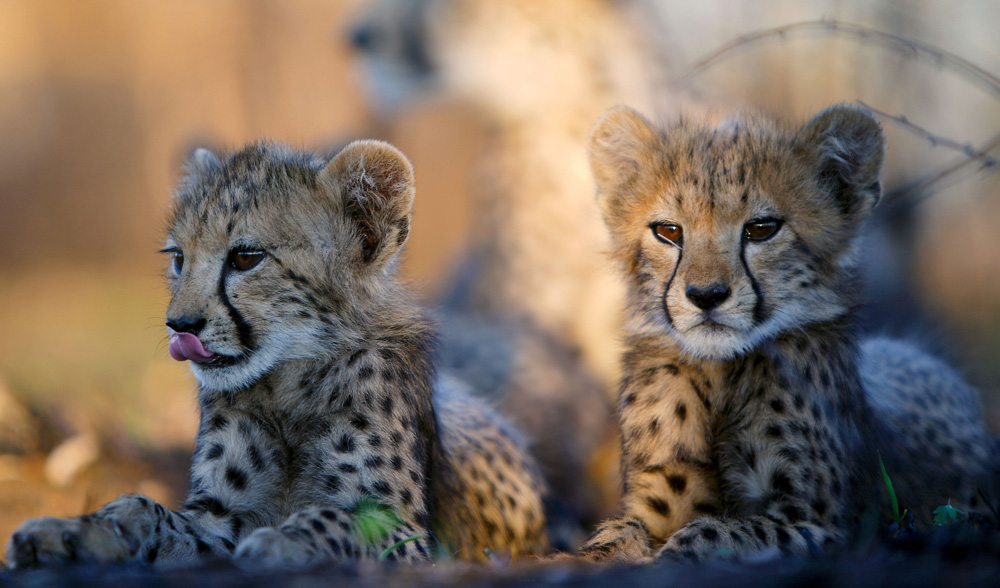 At the beginning, we first saw the mother, already known to our guide Kim, with her five cubs, each bearing a rather stylish fur ruff along their backs the better to help them camouflage their hiding places in the long grass. This was literally a fur which they outgrew. At first the breast-fed babies couldn't understand their mother’s appetite for fresh killed meat – antelope, impala, klipspringer. But soon enough the lessons in hunting began, though not before the family itself suffered casualties. Once there were five juveniles, but one young female cub simply disappeared. Our intrepid guide Kim could find no clues as to the cub’s fate, but assumed the worst. Kim named the lone male, who was typically adventurous and even foolhardly, Solo, and then he too disappeared. But Solo’s body, partially eaten, was found at the base of a tree: a leopard, a lion?
At the beginning, we first saw the mother, already known to our guide Kim, with her five cubs, each bearing a rather stylish fur ruff along their backs the better to help them camouflage their hiding places in the long grass. This was literally a fur which they outgrew. At first the breast-fed babies couldn't understand their mother’s appetite for fresh killed meat – antelope, impala, klipspringer. But soon enough the lessons in hunting began, though not before the family itself suffered casualties. Once there were five juveniles, but one young female cub simply disappeared. Our intrepid guide Kim could find no clues as to the cub’s fate, but assumed the worst. Kim named the lone male, who was typically adventurous and even foolhardly, Solo, and then he too disappeared. But Solo’s body, partially eaten, was found at the base of a tree: a leopard, a lion?
Then another female cub just seemed to collapse, lacking even the energy to follow their mother. Bleeding from her nose, she succumbed to a mysterious disease and died within the day. Meanwhile her sister was mauled by a baboon and displayed a festering wound on her shoulder. The wound was swarmed by biting ants, and the youngster was traumatised. But here human help was on hand. Usually the wilderness vets only intervene when trouble has been caused by humans: animals wounded by poaching for instance, and not endangered simply by the normal risks of their lives. But as the cheetahs are an endangered species, this suffering cub was sewn up, medicated and recovered.
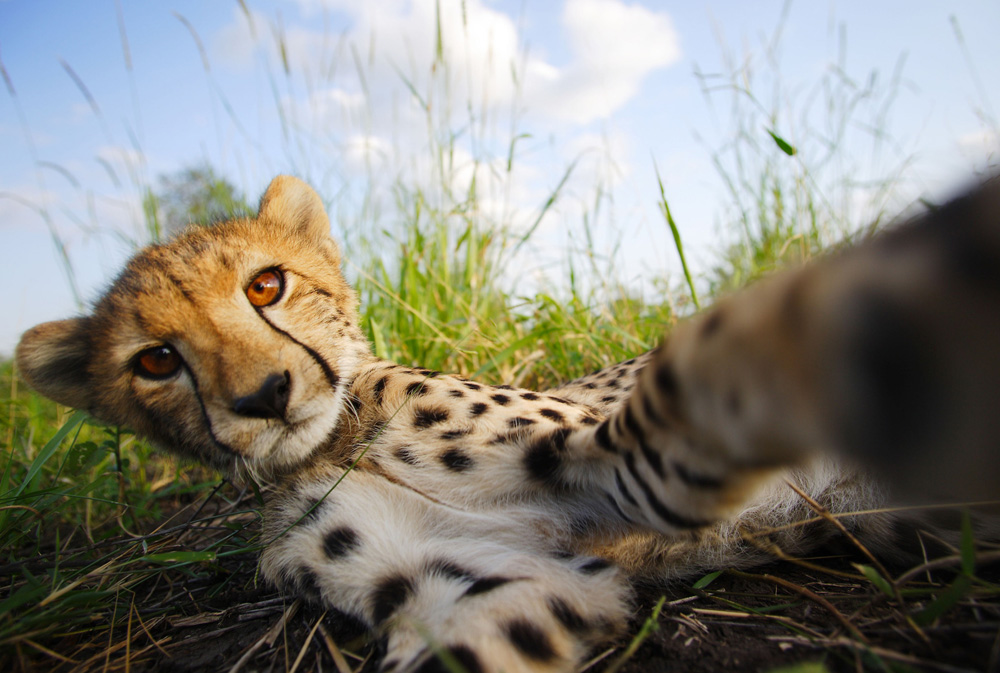 The mother persevered, teaching her cubs to scan the countryside for prey by climbing trees. Only the smaller deer were possible victims, and there was a funny sequence as a zebra was dismissed as too big, giraffes as too tall, and elephants as way too large. Weaned, the hungry cubs learned to hunt down their natural prey, and we saw the techniques they learned from mum. The prey is brought down and killed by strategic bites to the throat which suffocate it. We also saw sequences when seemingly-dead deer suddenly got up and in a desperate quest for life tried to get away – sometimes successfully.
The mother persevered, teaching her cubs to scan the countryside for prey by climbing trees. Only the smaller deer were possible victims, and there was a funny sequence as a zebra was dismissed as too big, giraffes as too tall, and elephants as way too large. Weaned, the hungry cubs learned to hunt down their natural prey, and we saw the techniques they learned from mum. The prey is brought down and killed by strategic bites to the throat which suffocate it. We also saw sequences when seemingly-dead deer suddenly got up and in a desperate quest for life tried to get away – sometimes successfully.
The family communicated not only with body language but with a lot of vocalising, well understood by the cheetahs if not us. The penultimate sequence showed us the departure of the mother; after all her amazing care, she knew when it was time to leave her cubs in the territory in which they had grown up. She was mourned by one of the sisters with little cries for two full days; the other did not even seem to notice.
Amidst the fascination of the cheetahs who so helpfully for the film makers hunt by day, it is of course nature red in tooth and claw that is the real subject: life – eat or be eaten – and death. The final moment though was when Kim evidently came upon one of the full-grown sisters, and this wild animal walked up to him – and licked his face. Aw...

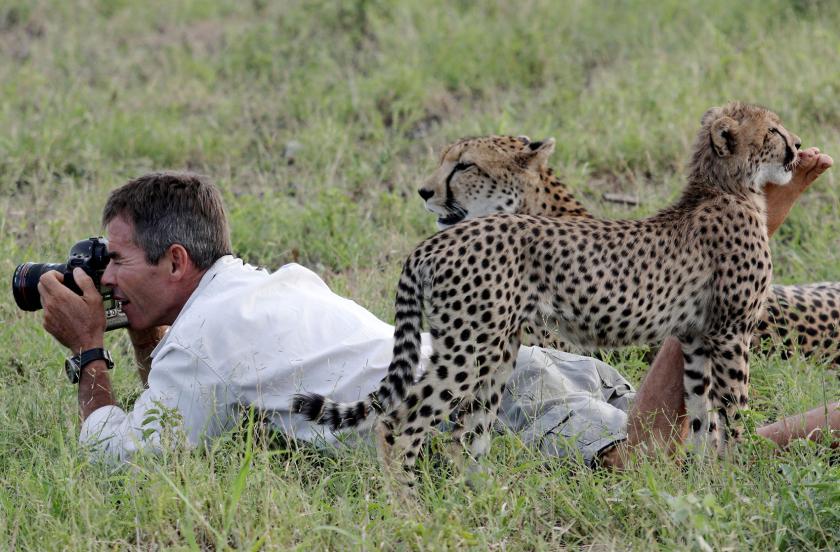










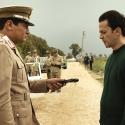


Add comment